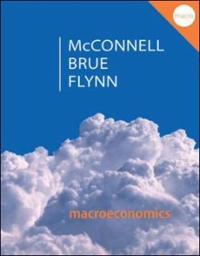Insurance premium: an amount to be paid for a contract of insurance. (In the context of the article, this is the amount a household has to pay to insure their house against damages caused by oods.) Excess (in the US. it is called 'deductible'): an amount of a claim not covered by insurance; a xed portion of the accident cost that the insured person must pay in order to make a claim to their insurance provider. (In the context of the article, this is the amount a household has to pay to their insurance provider if they want to make a claim on their policy for the cost of damages caused by oods to their house.) Some insurance contracts have a compulsory excess and can offer a lower premium for any additional, voluntary excess. (8.) According to the UK Environment Agency report published in 2010,1 there is 1% annual probability of river ood in Hull area, assuming there are no ood defences. Consider a typical household who owns a house that would cost 100, 000 to replace should it ever be destroyed by ood. The household's utility function is U = W05. How much would fair insurance cost that completely replaces the house if destroyed by ood? Assuming that this household has no other wealth, how much would they be willing to pay for such an insurance policy? Why is it different from the fair insurance cost? [15 points] (b) Suppose an insurance company offers two plans for a household to se- lect from, both providing 100, 000 of coverage in the case that their house is ooded. Plan A has zero excess but charges a high premium. Specically, Plan A charges 2,000 for 100, 000 of coverage. Plan 13 requires a compulsory excess of .19 3, 000, and charges a premium of (2,000 LEE), where E 2 3,000 is the total excess. Suppose m = 0.534. (3') Will the household purchase insurance, and if so, will it purchase Plan A or Plan B, assuming they can only pay compulsory excess? Show this mathematically. [10 points] (it) If the household can pay voluntary excess, What amount of the total excess will they optimally choose, assuming the household maximises expected utility? [10 points] (tit) What is the maximal amount of total excess the insurance com- pany will allow the household to cheese? Explain. [5 points]









